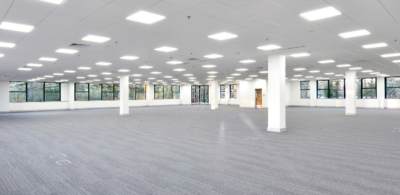In this three-part series on how law firms can leverage a lease event as a catalyst for transformational change, we’ve explored disruptors and identified the best practices progressive law firms embrace. Here we conclude with the questions law firms need to ask themselves to align their workplace with their vision and identify the best ways to strategically leverage a lease event as a catalyst for workplace evolution.
For workplace advisors, the goal is to help firms leverage the workplace strategically to align with their vision, key organizational goals and desired culture. We recognize that a lease event can be a significant catalyst for firms to contemplate new ways of working, as it can significantly impact decisions on the location, size and space attributes, brand and image. It’s an opportunity to intentionally curate the desired employee and client experience.
We ask each client to consider the following questions as we guide them through the development of a workplace strategy to support a new lease event:
- How will your firm be working five years from now?
- How will work processes change?
- How will automation change how you work?
- How will shifting client expectations force you to recalibrate?
- What type of workforce will be required?
-
- What are their expectations (of culture, flexibility, mentoring and so on)?
- Who will we be competing against you to secure this talent?
- Where could they work? (on-site, off-site, near-site)
-
- What is the quintessential workplace experience you desire to create for attorneys, staff, clients and community?
- What implications will this desired experience have on the amount and type of space required?
- Given the above, what locations should be considered?
- How much change management and training will be required to prepare for this type of change?
- Do you have the right leadership support to make this change stick?
The legal landscape is changing rapidly. Workplace design can help firms prepare for and navigate those changes, embracing disruption instead of hiding from it. If you are seeking ways to maximize your real estate and workplace investments, consider the following:
- Start early. It takes time to develop and implement new strategies, and even longer for people to adapt to new changes and potentially reskill. Consider starting three to five years before a lease event to allow time to research, pilot, build and sell the business case and finally, implement changes. Time also gives you more options in the market.
- Form an integrated, diverse, multi-disciplined core team. Operations, IT, human resources, marketing and real estate teams can leverage additional expertise focused on workforce analytics, organizational design and culture, and training and development. Securing senior-level leadership is key to making transformational changes.
- Capture meaningful evidence to drive decision-making. Both qualitative and quantitative data on factors including workplace activities, interactive networks, task complexity, culture, engagement and utilization are essential to planning for change. Engaging employees appropriately throughout the process not only ensures creative solutions, it supports increasing readiness for change because employees feel like they are part of the solution.
- Focus on creating a memorable workplace experience. Seize the opportunity to curate exceptional, authentic experiences and environments that draw people to the office, help them work at their best and encourage them to become advocates of the firm. Evolving experience is essential. It is a holistic, powerful process that is ongoing and requires dedicated ownership and funding.
- Define how you will measure success. Early on, create consensus on the key KPIs, define ownership and frequency of these metrics. This data and process will provide you with the evidence to make informed decisions that will allow the firm to evolve the workplace alongside the firm’s evolution.
Lastly, recognize you are creating and leading change. Preparing for an uncertain future can be both challenging and exciting. Learn from others. Encourage and leverage the ideas of all generations but build for the future by listening closely to younger generations. They are ready to take you forward!

 Colliers Insights Team
Colliers Insights Team

 Aaron Jodka
Aaron Jodka
 Amber Merrigan
Amber Merrigan
 Andrew Steele
Andrew Steele